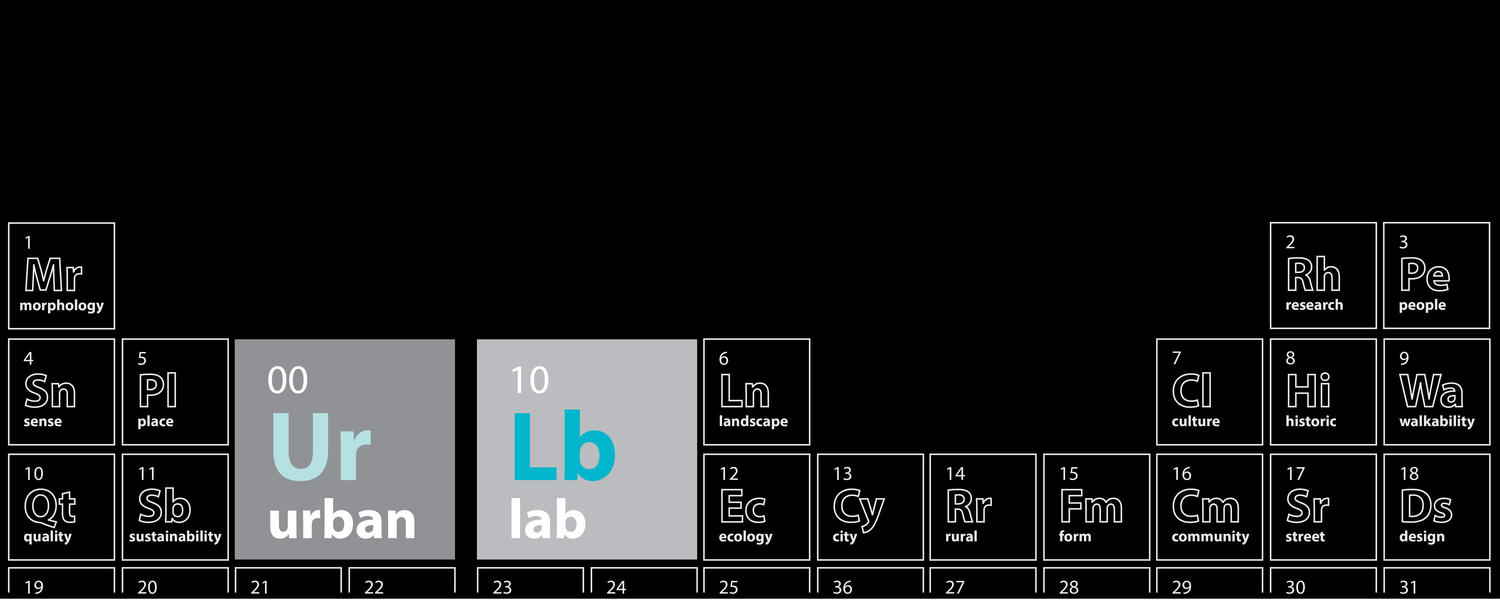
Urban Lab
Pathways to Weight: The influence of neighbourhood environments on the weight status of adults
The Urban Lab is collaborating with the Cummings School of Medicine on a multi-year project.
Funding: Canadian Institutes of Health Research
2013-18
This research builds on several previous projects dealing with the relationship between health and the built environment. A multidisciplinary team including the Urban Lab and the Cummings School of Medicine Department of Community Health Science undertook a Canadian Institutes for Health Research (CIHR) funded study investigating the relationships between the physical and social characteristics of neighbourhoods and health. The goal of the study was to inform interventions, policies, and programs that will lead to more options for healthy eating and physical activity for Calgarians. Neighbourhoods can influence residents behaviours such as physical activity and diet which in turn can influence their health and wellbeing. Features of the neighbourhoods where people live, such as the availability of sidewalks, access to supermarkets, access to parks and safety can influence their choices and actions. There is presently insufficient information about the extent to which Calgary neighbourhoods might influence peoples physical activity and diet choices. This project includes surveys of residents and analysis of spatial characteristics and qualities to better understand these relationships.
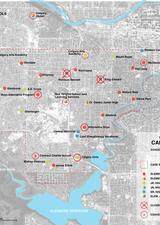
Causes and Consequences of Closures of Inner City Schools in Calgary and Edmonton
Commissioned by the Ministry of Education, Government of Alberta
2016-17
This research examined the complex and inter-related causes and consequences of school closures in mature neighbourhoods in Calgary and Edmonton in order to propose recommendations and strategies to mitigate their loss. The factors involved neighbourhood process and form, school life cycles and school building types, opportunities for alternative uses, as well as the processes and policies involving school system organization. Several organizations and levels of government contributed to the understanding of the issues, and the research team developed a number of innovative methods of dealing with large sets of data and mapping in order to understand issues of city and school process and form.
Crescent Heights Density Visualization
Funding: the Crescent Heights Community Association
2016-17
One of the frequent impediments to higher density development is community opposition, often due to a lack of information and visuals. In this project, we modelled various density scenarios for redevelopment of Centre Street in Crescent Heights, and developed virtual models that participants could 'walk' through and experience, and therefore evaluate more objectively. This project allowed us to develop and test some new tolls and techniques for more meaningful public engagement that could lead to healthy densification of this inner city neighbourhood.
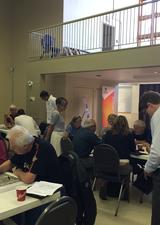
Crescent Heights Planning and Design Project
Funding: the Crescent Heights Community Association, the Urban Alliance, and EVDS makeCalgary
2015-16
The Crescent Heights Community Association contacted the Urban Lab for assistance in addressing planning and design concerns related to infill, redevelopment, main street improvements and the urban forest. The project involved a robust community engagement process that included neighbourhood walkabouts, workshops, design scenarios, and presentations. It also included consultation with the City Planning and Transportation Departments, and resulted in a set of tools and options for use by the community as their neighbourhood evolves and they need to participate in decisions regarding their properties, public spaces, and amenities. The urban forest, infill guidelines, and commercial street improvements were some of the key issues.
LAPLACE Late Life Location of Care
with colleagues form the Universite Laval
Funding: Canadian Institutes of Health Research LOI for development of full CIHR grant proposal
2015-16
Well-being and quality of life of older adults in late life years is determined not just by the person’s physical and mental capacities but also by the interactions each of us has with the environments we inhabit across our lives. These environmental influences on health and wellbeing in older age shape our health and wellbeing we have by influencing our available options and choices. This means the ability to live in one’s own home and community safely, independently and comfortably, regardless of age, income or level of capacity. The goal of this project was to lay the ground for a transdisciplinary research team that will become a global leader in identifying best practices regarding the built environment so it can foster optimal wellbeing and quality of life of older adults in late life years. It attempted to break disciplinary silos across multiple sectors of society to conduct leading-edge research to empower aging Canadians to secure the conditions they need to maintain better health and wellbeing across the life trajectory. It also included design of training programs for workers and professionals (beyond the health sector) who play an essential role in the wellbeing of older adults in late life years.
Centre City Audit for the City of Calgary
Funding: the City of Calgary as an Urban Alliance Project
2015
The Centre City is expected to accommodate the addition of up to 40,000 new residents and over 60,000 new employees by 2035. The Centre City Plan vision is to improve the existing conditions to provide a high quality urban experience in the downtown core. Overall, Calgary provides a high quality physical environment; the challenge is to identify priorities for improvement that will attract more people to the Centre City, and to make an already great city even better. The Urban Lab was engaged to conduct a detailed audit of the public realm elements, and to propose recommendations. Innovations in data gathering, mapping, and analysis were contributions to this project which should benefit all Calgarians.
Grouard Heritage and Cultural Resources Concept Plan
Funding: Alberta Rural Development Network (ARDN), Northern Lakes College, and Grouard Historical Society
2012-13
Grouard, Alberta is a small hamlet at the epicentre of a region that has seen successive use by aboriginal and Metis groups, fur traders, the Catholic Mission and School, the North West Mounted Police, and now Northern Lakes College, all which have left physical traces and artifacts. Together they have formed a rich and complex history which now provides a resource for community development. The Grouard Heritage and Cultural Resources Concept Plan consists of a physical plan as well as a strategy for program development. The plan ties together the landscape, landmarks and physical resources to tell the diverse and rich stories of the region, and includes existing structures, small scale reconstruction of historic sites, culturally significant way finding, and a trail system. The strategy includes programs to increase tourism potential, create local employment opportunities, create exposure through various media, and improve the overall livability of the area. Previously, decisions from outside of Grouard dictated its activities and economic opportunities, however with the development of this concept plan, there is much potential for the community to take charge of the next steps in its evolution and grow as sense of community pride.

PlanYourPlace: A Geospatial Cyber-Infrastructure for Sustainable Community Planning
Funding: GEOIDE TSII and the Neptis Foundation
2011-13
PlanYourPlace: a geospatial cyber-infrastructure for sustainable community planning is an interdisciplinary project that proposes to build an open source structure of modern web-based tools to support planning practice that engages communities. The vehicle for the development of these tools is the “middle ring” of Calgary neighbourhoods that were constructed during the 1950s to 1970s and that are currently experiencing redevelopment pressures. To address some of the impediments to transitioning Calgary’s Middle Ring to greater sustainability, we will develop several tools that will consider: increases to density, modifications to townscape types (distinct lot + building combinations) or development of new ones, changes to land uses and spatial structure, and consideration of commercial/gas station intersections for redevelopment potential.
The project team is a collaboration between the Urban Lab and colleagues in Geomatics Engineering and Civil Engineering at the University of Calgary and University of Toronto.
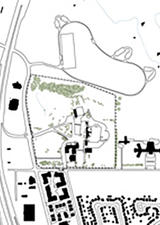
St. Mary’s University Campus Site Planning Project
Client: St. Mary’s University College
2011
This project is providing direction for the future growth of the campus to accommodate anticipated doubling of student numbers and to enhance student life and the appeal of the campus. The intent is to develop a plan and design guidelines that will address space and public realm needs and that will provide a long term vision for student, alumni and donor engagement. The Urban Lab is working closely with a Site Planning Committee on a process that includes a historic evolution analysis, townscape analysis, development of principles for development, and conceptual plans.
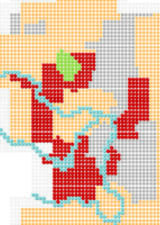
Transitioning Calgary's Middle Ring: Sustainability Concepts Pilot Project
Client: the City of Calgary through the Urban Alliance (a collaboration between the City of Calgary and University of Calgary)
2011
Calgary's "middle ring" - a broad band of neighbourhoods developed between the 1950s and 1970s - is poised to experience increasing pressures of redevelopment as they are seen to offer proximity to the downtown employment centre, positive qualities of urbanity including mature street trees, block patterns that are generally more walkable than the outermost ring of suburbs, and access to services and amenities. There is an opportunity to guide redevelopment so that it is coherent with the aspirations of the City of Calgary's Municipal Development Plan that is emphasizing higher densities, more compact development, greater mix of uses, and other qualities of greater sustainability. In order to progress towards the answers to these questions, a smaller sub-project - this Middle Ring Pilot Project - was completed. It includes issues and concerns, best practices and precedents, case study examples, research on economic and market issues, development of example "townscape types" (distinct lot + building combinations that are appropriate to a redeveloping neighbourhood, and initial strategies.
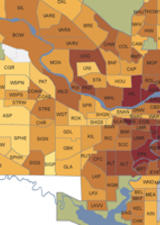
EcoEUFORIA (Economic Evaluation of Using Urban Form to Increase Activity)
Independent Research
Funding: Canadian Institutes of Health Research
In collaboration with the Faculty of Medicine and The Faculty of Kinesiology
In progress
The goal of this three year project is to determine the economic implications of improving urban form to support physical activity. Several aspects will be studied: activity patterns of residents will be determined by survey, measures of walkability and other parameters of urban form will be documented and analyzed through mapping and fieldwork (including reconnaissance on foot/bicycle of all 230 Calgary neighbourhoods), and the costs of modifying various aspects of the urban form will be calculated. This research will establish the cost of retrofitting and improving Calgary’s neighbourhoods and will have implications for public health.
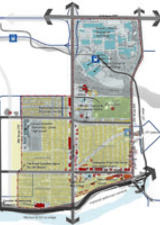
Urban Form and Social Connectivity: What is the Relationship?
Client: The Urban Alliance - City of Calgary
2009
This project aims to understand the relationship between urban form and social connectivity. Fourteen Calgary neighbourhoods representing different eras of development were analyzed in terms of various morphological and qualitative attributes, and several measures of social connectivity were analyzed by surveys and interviews. This research will contribute to the understanding of what makes “good” neighbourhood form that supports social connectivity.
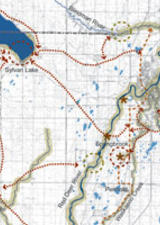
Red Deer County Open Space Master Plan
Client: Red Deer County
In collaboration with Dillon Consulting Ltd.
Merit Award - Alberta Professional Planners Institute
Regional Citation Award - Canadian Society of Landscape Architects Award of Excellence for Parks and Open Space Design - Recreation for LifeFoundation
2009
This innovative project is a comprehensive approach to providing an open space plan for a large central Alberta county. Over the course of several years, the Urban Lab, in collaboration with Dillon Consulting,completed a multi-phase planning document. This work consisted of an physical inventory of all County-owned open spaces, consultation with residents,documentation of cultural landscapes, and assessment of issues and opportunities. Various project zones were identified for more detailed study,and comprehensive plans for specific inter-related projects and paths were developed. This project involved the development of a comprehensive database for the County, design of a working typology of open spaces, various graphic tools for illustrating the project areas, development of policies and implementation strategies.
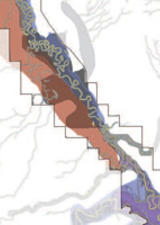
Medicine River Valley Area Structure Plan
Client: Red Deer County
2008
The Medicine River Valley is under growing pressure for conversion from traditional large parcel agriculture to small parcel specialty agriculture, hobby farm uses, and the increasing demand for country residential development. This innovative plan provided a coordinated approach to preservation and encouragement of agricultural uses, the conservation of natural capital, the development of compatible recreational and tourism uses, and the associated development of well-sited rural residential neighbourhoods.
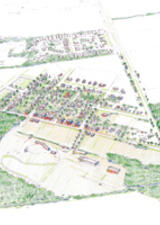
Benalto Area Redevelopment Plan
Client: Red Deer County
National Honour Award - Canadian Society of Landscape Architects
2006
Benalto is a small hamlet located west of Sylvan Lake in Central Alberta. It has a traditional railway town form, however with obsolescence of the railway and related infrastructure, the structure and function of the town have changed. The proximity of Benalto to Sylvan Lake and the City of Red Deer make it desirable as a place to live that combines small town living with big city convenience, and the hamlet is being identified as an area likely to experience growth. The population of the town and region is now composed of a diverse mix, including many artists and artisans in addition to the original agricultural community, and there is the expectation that as the hamlet evolves, it will retain its small town character and qualities and offer economic opportunities and a high quality of life.
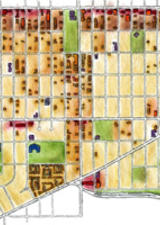
Killarney - Glengarry Neighbourhood Study
Client: Killarney-Glengarry Community Association
2006
The neighbourhood of Killarney-Glengarry is going through changes in its urban fabric due to pressure from redevelopment and a generational change. Current redevelopment trends are expected to continue as this neighbourhood becomes more attractive as an inner city community. Subdivision and infill will dramatically change the character and identity of Killarney-Glengarry, and the Community Association is interested in strategies that will assist them in managing growth and change. In the absence of a current City of Calgary Area Redevelopment Plan for Killarney-Glengarry, this project was conceived as a means of helping to define the issues and outline some alternatives for future planning.
This document is the result of some preliminary analysis and background studies that should provide a base for additional work. The research for this background document was funded by the Killarney-Glengarry Community Association and the Calgary Board of Education.
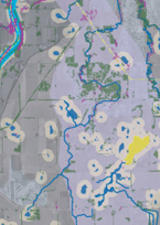
Springbrook and Gasoline Alley Area Structure Plan
Client: Red Deer County
This project looks at innovative approaches to the planning and development of high quality, sustainable townscapes and landscapes in Red Deer County. The design process is based upon a comprehensive analysis of the region’s landscape called ‘townscape analysis’, which helps us to set out principles and guidelines for development in the area. The project included development of neighbourhood plans and streetscape guidelines.
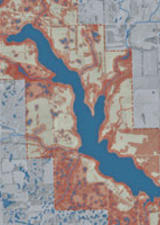
Pine Lake Area Structure Plan
Client: Red Deer County
2006
Pine Lake is a popular destination in central Alberta. There is an increasing demand for recreational and seasonal properties in the area which require additional land and necessitate an up-to-date land use plan. The project approach applied an ecological-environmental planning process identifying areas suitable for development and providing a structure for future growth that would be sustainable and in keeping with the area’s character.
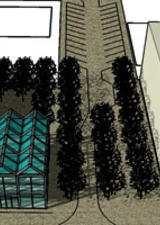
Mustard Seed
Client: Mustard Seed
2006
In May 2004, as a result of discussions initiated by the Victoria Crossing BRZ with various organizations and agencies, a project dealing with the urban revitalization of the Centre Street South area and Mustard Seed expansion and public space developments was developed. The Urban Lab developed conceptual plans that would address the spatial and functional needs of the Mustard Seed, and improve the streetscape and public spaces of the adjacent streets and lanes. This project began as a pro bono contract fulfilling the Urban Lab’s role as a community outreach group of the University of Calgary.

The Calgary Project
Independent Research
Funding: ENMAX Power and University of Calgary
National Honour Award - Canadian Society of Landscape Architects
2005
Since 2000, many Urban Lab projects have contributed to the development of a book publication on Calgary Urban form. A 3D computer model of the downtown and surrounding area was built, and several analytical techniques were developed.
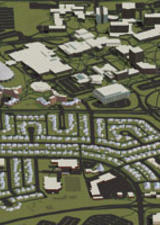
University of Calgary Campus Analysis and Planning
Client: Campus Infrastructure, University of Calgary
2005
Throughout the University of Calgary’s brief history, both the academic mission and the physical campus have evolved in response to changing needs, values and opportunities. A series of academic plans with the supporting campus plans have directed campus development. The most recent campus plan is the Campus Community Plan (2001). It was prepared in response to the academic direction at the time and many of the principles and conceptual directions are no longer relevant or current. This project has been a collaboration with Campus Infrastructure in developing a tridimensional virtual model of the campus and an analysis to lay the ground for the development of a future Campus Master Plan.
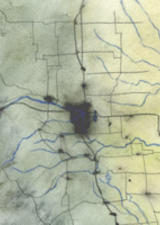
Sense of Place: a series of events celebrating Alberta’s Centennial
Client: Nickle Arts Museum, University of Calgary
National Honour Award - Canadian Society of Landscape Architects
Place Planning Award - Environmental Design Research Association
Calgary Heritage Lion Award (Education) - Calgary Heritage Authority
As a means of celebrating the centennial of the Province of Alberta a series of events and exhibitions was conceived. Working with The Nickle Arts Museum, the Urban Lab took a lead role in design of the exhibition, editing and graphic design of two publications, and a series of excursions into the cultural landscapes of Alberta.
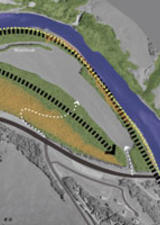
Joffre Bridge Sustainable Development Analysis
Client: Red Deer County
2005
This project arose in response to development pressure in the area. The purpose of the sustainable development analysis was to identify areas where development was suitable and what form should it take. The Townscape Analysis methodology was employed which consists of understanding various ‘layers’ including environment, cultural heritage, existing land use and infrastructure.
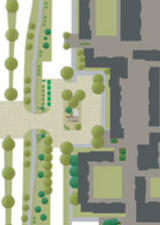
Varsity Courts Family Housing
Client: Residence Services, University of Calgary
This project required an integrated approach to understanding issues related to Varsity Courts as well as to a general campus major entry, and also to the interface with the City of Calgary public realm. It involved consideration of enclosure, safety and privacy, sound attenuation, entries (campus and Varsity Courts) and general site planning and landscape design related to the western edges of Varsity Courts.
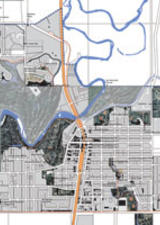
Town of High River Open Space Plan
Client: Town of High River
Regional Merit Award – Canadian Society of Landscape Architects
2003
This project was commissioned by the Town of High River in response to a proposal put forward by the High River Green Space Committee, a volunteer group concerned with preserving and improving the quantity and quality of public open space in this town, located 30 minutes south of Calgary. This innovative Open Space Plan considers streets, parks and other public spaces as the infrastructure of the public realm, and builds on the relationship between the town and its river.
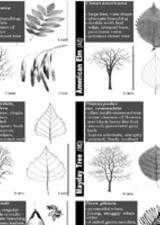
Beltline Urban Forest Inventory and Analysis
Client: Beltline Community Association
Funding: Alberta Lotteries Board and Connaught Community Association
Awards: Regional Citation, Canadian Society of Landscape Architects
2002
The Connaught Community Association Inner City Forest Committee and the Urban Lab collaborated in 2001 to prepare an urban forest inventory and report. The Lab conducted a short workshop with community volunteers on basic tree biology and street tree identification, who then completed the inventory. This material was then digitized, and mapped. As well, analysis of street types and suitability for street tree planting was completed. The report includes the complete inventory, plus recommendations and strategies for developing a healthy and complete urban forest. The complete report is posted on the Beltline Community Association website.
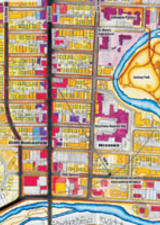
Cliff Bungalow - Mission Townscape and Process
Client: Cliff Bungalow-Mission Community Association
Funding: Calgary Foundation Neighbourhood Grants Program
National Merit Award and Regional Honour Award - Canadian Society of Landscape Architects
2001
This community design project arose in response to the City’s interest in searching for an alternative to the Area Redevelopment Plan process currently utilized in planning established communities. This project illustrates a comprehensive methodology for documenting and analyzing the neighbourhood, and provides a set of tools for residents, planners, developers, architects and others involved in the community development process. It is not a fixed and final ‘plan’, but is a working document that will evolve with the community.
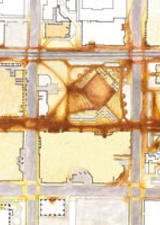
Calgary Cultural District - A Framework for the Future
Client: Calgary Cultural District Partnership
Regional Citation Award - Canadian Society of Landscape Architects
2000
This urban design project introduced district identification measures and structural changes to strengthen the image and function of the Cultural District as a distinct neighbourhood within which the best of Calgary’s public life and cultural expression can be found. The project proposed strategies and interventions at various scales from the downtown to the street. A particular challenge was to develop a common framework for the diverse interests of the client group, and the unanimous positive response to the document indicates its success.
